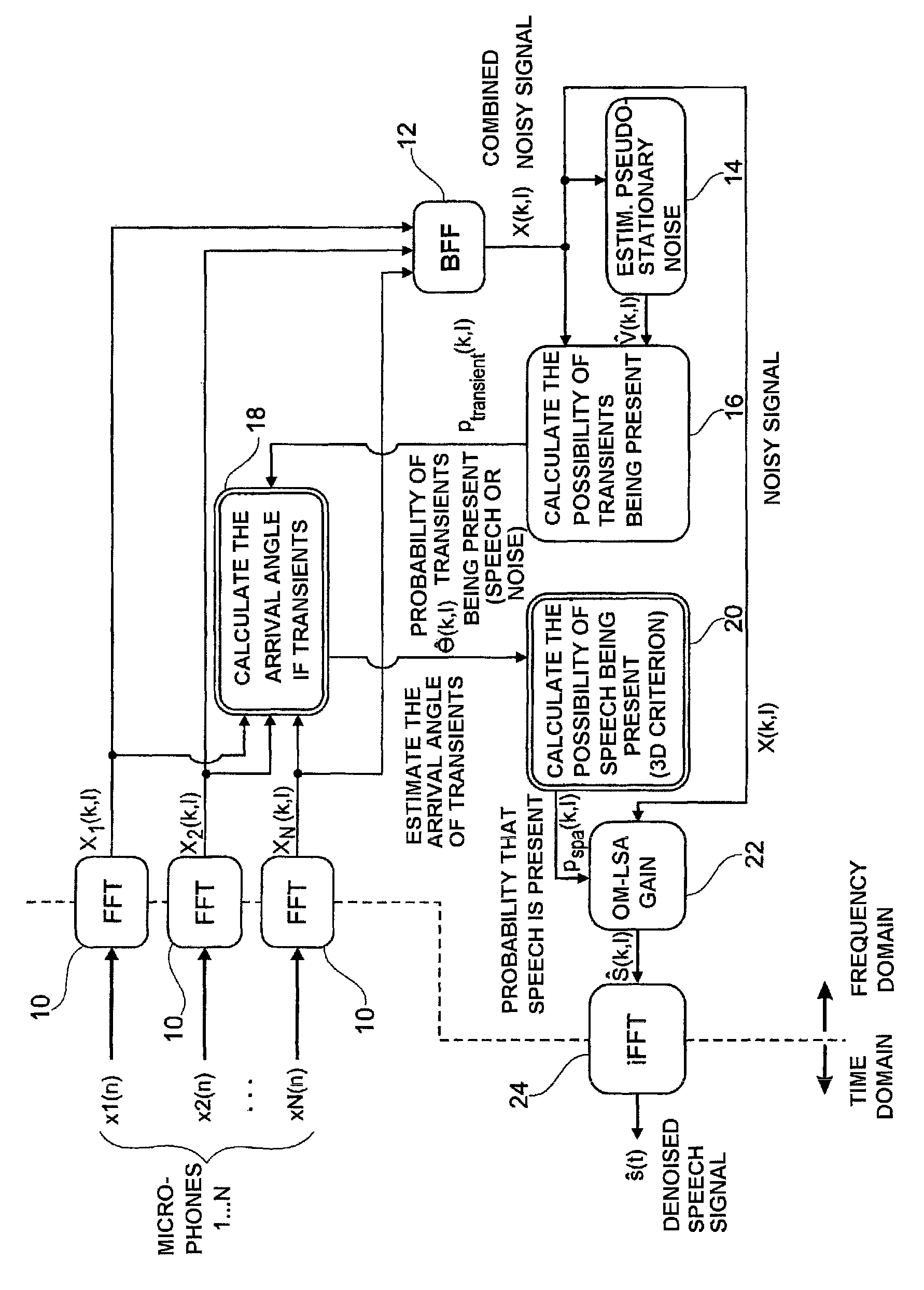Method of filtering non-steady lateral noise for a multi-microphone audio device, in particular a “hands-free” telephone device for a motor vehicle
a multi-microphone audio and filtering technology, applied in the direction of loudspeakers, electrical transducers, instruments, etc., can solve the problems of difficult to recognize shape, difficult to extract the useful signal buried in the noise, and constraint, so as to minimize the distortion
- Summary
- Abstract
- Description
- Claims
- Application Information
AI Technical Summary
Benefits of technology
Problems solved by technology
Method used
Image
Examples
Embodiment Construction
[0032]The method of the invention is implemented by software means that can be broken down schematically as a certain'number of modules 10 to 24 as shown in FIG. 1.
[0033]The processing is implemented in the form of appropriate algorithms executed by a microcontroller or by a digital signal processor. Although for clarity of description the various processes are shown as being in the form of distinct modules, they implement elements that are common and that correspond in practice to a plurality of functions performed overall by the same software.
[0034]The signal that is to be de-noised comes from a plurality of signals picked up by an array of microphones (which in a minimum configuration may comprise an array of only two microphones) arranged in a predetermined configuration.
[0035]The array of microphones picks up the signal emitted by the useful signal source (speech signal), and the differences of position between the microphones give rise to a set of phase shifts and variations i...
PUM
 Login to View More
Login to View More Abstract
Description
Claims
Application Information
 Login to View More
Login to View More - R&D
- Intellectual Property
- Life Sciences
- Materials
- Tech Scout
- Unparalleled Data Quality
- Higher Quality Content
- 60% Fewer Hallucinations
Browse by: Latest US Patents, China's latest patents, Technical Efficacy Thesaurus, Application Domain, Technology Topic, Popular Technical Reports.
© 2025 PatSnap. All rights reserved.Legal|Privacy policy|Modern Slavery Act Transparency Statement|Sitemap|About US| Contact US: help@patsnap.com



